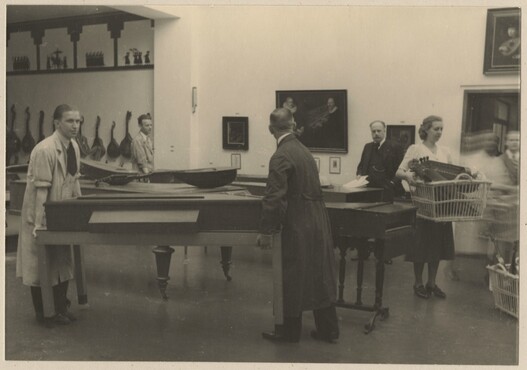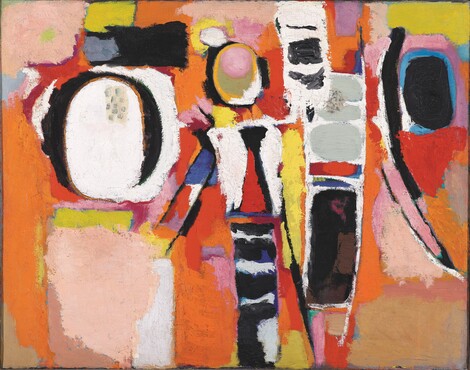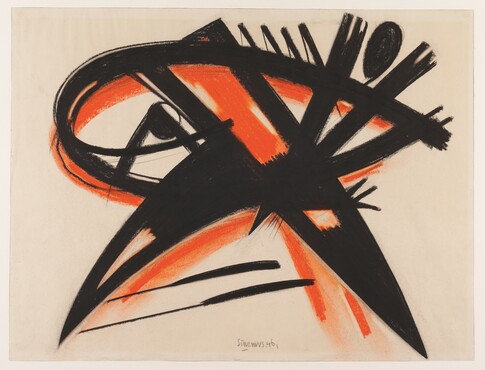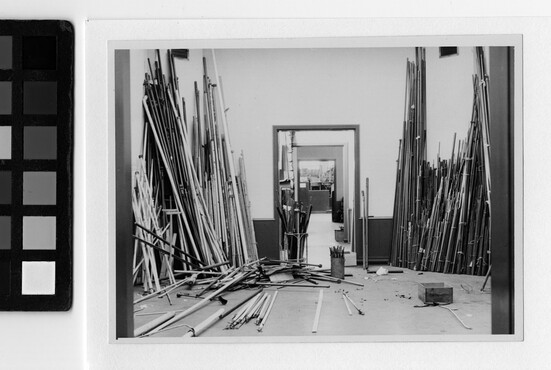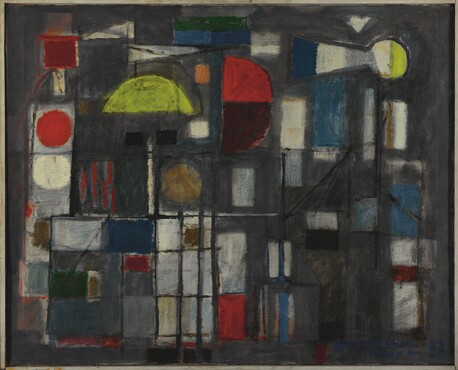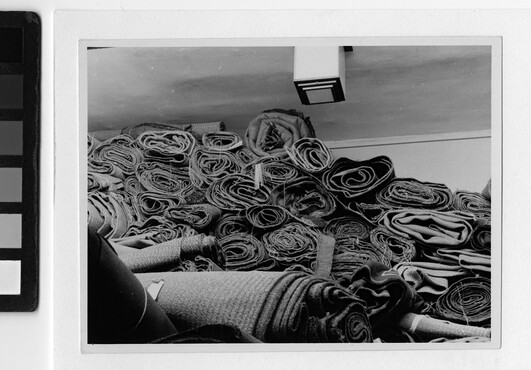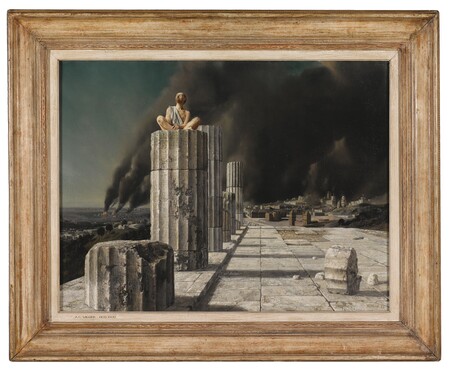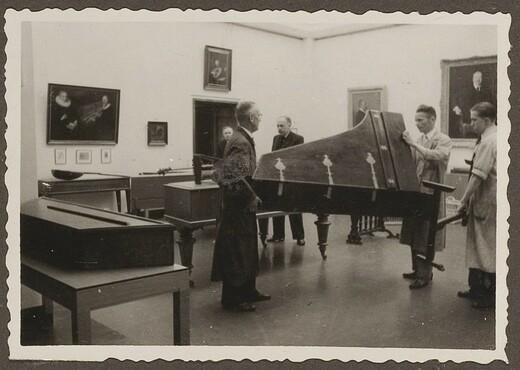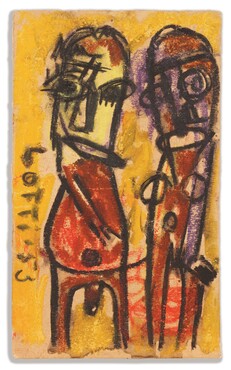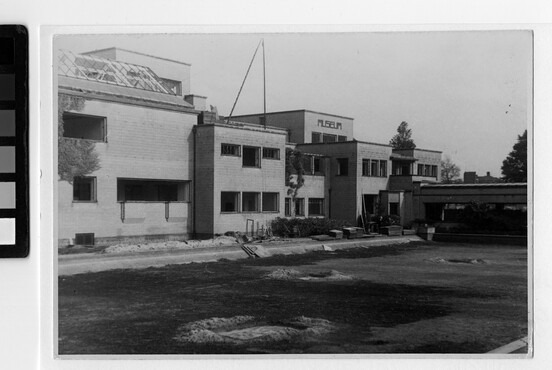Ontdek de collectie
Kunstmuseum Den Haag has a treasure chamber of over 160.000 pieces of art. Here we work on making the highlights from this collection available online.
Museum in Wartime / The Art of Freedom
The Hague 1940-1950
Kunstmuseum Den Haag had not been open for long before war broke out, yet the building was at risk of demolition when the Atlantic Wall was built. Fortunately, it was spared this fate, though the war years still had a huge impact on the museum. The building suffered and the staff had to cope with many challenges in their efforts to ensure the collection survived. Kunstmuseum Den Haag asked historical researcher Geert-Jan Mellink to make a detailed study of the museum’s history during the occupation. Lynne van Rhijn (curator of modern art at RKD – Netherlands Institute for Art History) has researched the impact of the liberation on experimental art in The Hague. In a small exhibition and a publication, we will be celebrating 76 years of freedom, and considering how the museum survived the Nazi occupation, and how the museum and art in The Hague flourished again after the war.
War
Looking around now in H.P. Berlage’s magnificent art deco building, it is difficult to imagine that the beautiful galleries flooded with natural light were once used as storage for confiscated household effects during the war. It was a desolate sight. In 1944 the building was damaged when a V2 rocket exploded nearby, exposing parts of it to the elements. Fortunately, the collection had been taken to safety, though 31 exhibitions were in fact held during the war years, not only because an empty museum ran the risk of being commandeered, but also to offer the people of The Hague some art and culture by way of comfort and a sign of hope.
Conditions during the war were difficult and challenging. The museum was close to the Hauptkampflinie, the area of The Hague that was laid completely bare to provide a free line of sight for snipers, and for the digging of kilometres of anti-tank trenches as part of the Atlantic Wall. The work of the museum staff was also obstructed by the occupying forces, the national socialist department of public enlightenment and the arts, and a pro-Nazi city council. Museum director Dr Gerard Knuttel was arrested by the Sicherheitsdienst and held for several years in the internment camp in Sint Michielsgestel. What choices did the management make? How were relations between the museum staff and the Nazi occupiers? What measures were taken to save the artworks? How did the museum manage to safeguard private Jewish assets? Geert-Jan Mellink’s study focused on these and other questions, as he pieced together a forgotten history. Kunstmuseum Den Haag commissioned the research because how the museum’s actions during the war are important to its work today. After all, they have a major bearing on issues like stolen art and the moral obligation to manage and preserve the heritage.
Liberation
The story of any occupation is also a story of liberation. Soon after the liberation of the Netherlands, repair work started on the building. It took some five years to complete. During that time, the art world saw some rapid developments. Dutch art was once more able to spread its wings, and artists in The Hague were soon taking advantage of this fact. Lynne van Rhijn used items in the collections of Kunstmuseum Den Haag and RKD – Netherlands Institute for Art History to study the impact of the liberation on experimental art in The Hague in the early post-war years. She revealed a fascinating picture of a renewed energy and drive to experiment.
Artists gleefully embraced the freedoms they had regained, such as the freedom to express their own inner world of emotions, and to abandon recognisable subjects. They were also free to draw inspiration from non-western cultures, where they found new forms of expression for what many felt was a new era. Willem Hussem, Wim Sinemus, Piet Ouborg and Jaap Nanninga all followed their own path to arrive at spontaneous abstraction, which was unique even by the standards of international developments in art.
Exhibition
The exhibition will offer an impression of the war years using photographic material, historical documents and iconic artworks, including a politically charged painting by Carel Willink which the museum purchased in 1939. It will also include several fashion items, such as a ‘liberation skirt’ and a dress made from a parachute. The sense of liberation will also be represented by post-war artworks linked to Lynne van Rhijn’s study. A selection of works by Ouborg, Nanninga and other artists will give a nice impression of the spontaneous abstraction that emerged in The Hague in 1945-1950. A Dutch-language publication entitled Museum in de oorlog / Kunst in vrijheid is available at the museum shop, price € 22.95. The museum will also post a short film about the war years online.
Museum in de oorlog
Tekst: Anneke Kortleve en Astrid Hulsmann, naar de tekst van Geert-Jan Mellink
Stem: Ariane Schluter onder regie van Renée van Marissing en Klevr Sounddesign
Animatie: Ruben van Esterik en Marieke van der Burg / Soundscape: Arjen Jongeneel
Fotografie: Mounir Raji en Gerrit Schreurs
Met dank aan: RKD, Haags Gemeentearchief, Haags Historisch Museum, Irma Benliyan, Doede Hardeman, Els Kerremans en Jolanda Zonderop.

